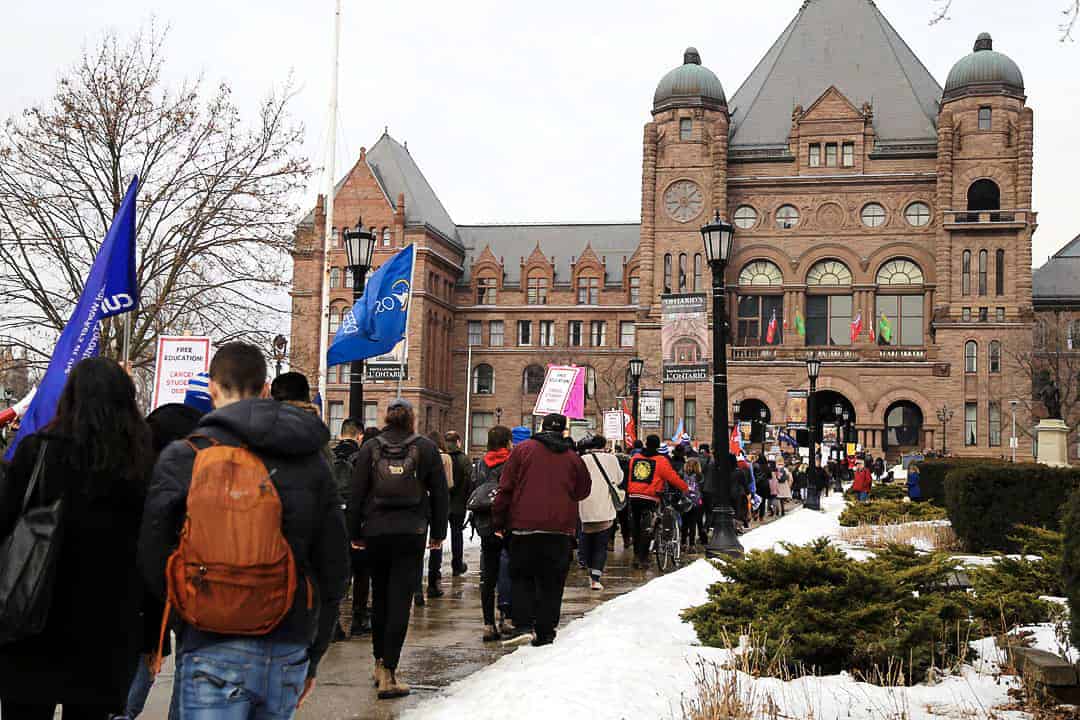Last month, when Premier Doug Ford used the notwithstanding clause to stop a strike by Ontario education workers, his decision heightened the tension between the Canadian Union of Public Employees (CUPE) and the Ontario government. Following Ford’s use of the clause, Canadians continue to debate about what this clause means for our ability to exercise our Charter rights.
What is the notwithstanding clause?
The Canadian Charter of Rights and Freedoms sets out rights and freedoms that Canadians believe are necessary in a free and democratic society. When proposing new legislation, the courts usually decide if it is within the reasonable limits of the Charter.
However, the notwithstanding clause gives governments the power to implement potentially unconstitutional legislation — any law that is not within reasonable limits of the Charter — for a period of five years. Including the notwithstanding clause was imperative in getting provincial support for the 1982 proposal of the Charter. As such, the clause is now enshrined in section 33 of the Charter.
Given the substantial power the notwithstanding clause gives governments over citizens, it comes as no surprise that the clause has been a hot topic of debate since its enshrinement. However, the nature of its use this time around has caused concern all over the country about what it could mean for our ability to exercise our rights in the future.
How have premiers misused the clause?
CUPE’s recent demands of the provincial government included an 11.7 per cent annual wage increase for educational support staff. However, the Ford government instead offered raises of two per cent a year for workers making less than $40,000 and 1.25 per cent for all others, which CUPE rejected.
As such, education workers across the province organized a walkout on November 4 that resulted in school closures and picketing lines. This was when Ford initiated the notwithstanding clause to pass Bill 28, or the ‘Keeping Students in Class Act,’ which would prevent further walkouts and school closures from happening.
Ford’s government has now used the notwithstanding clause twice, more than any other provincial government in Canadian history. This raises questions about how freely and under which circumstances should provincial governments use the notwithstanding clause.
According to Minister of Justice David Lametti, “[The notwithstanding clause] was meant to be a last word for a legislature to exercise parliamentary sovereignty. If it’s used at the beginning, it guts Canadian democracy and means the charter doesn’t exist.”
While the original purpose of the notwithstanding clause was to limit the power of the courts and allow governments elected by the people to have final say when passing legislation, it seems that premiers have only invoked the clause thus far to get their own way as quickly as possible.
By not implementing the clause and actually having new legislation reviewed by the courts, premiers could help ensure that new legislation upholds the values of a free and democratic society. Yet premiers seem to want to avoid the court review process for that very reason.
In 2019, Québec Premier Francois Legault used the clause to pass Bill 21, which bans the wearing of religious symbols in the public sector, saying that it is “the will of a majority of Quebeccers.” However, Legault failed to consider that one of the Charter’s founding principles is respect for minorities, and overriding this right puts the Charter’s supreme nature into question.
Cara Zwibel, director of the fundamental freedoms program at the Canadian Civil Liberties Association, encapsulates this when she says, “To me, [the notwithstanding clause] is for cases where you’ve gone back and forth with the courts, you’re tackling a difficult issue and there’s disagreement about a right or the scope of a reasonable limit and the government decides, ‘ultimately we know best.’ ”
So what can be done to protect the Charter?
The Canadian Civil Liberties Association has said that they want to see the notwithstanding clause repealed in order to protect the rights of Canadians. However, amendments to the Charter require agreement from at least seven of the provinces, and given the power the clause gives premiers, a repeal is unlikely to happen.
Instead of removing the clause altogether, there should be more specific and binding guidelines about when exactly the clause can be used. This could include at least one round of mandatory review by the courts, which could lead to alternate suggestions that would not result in the passing of unconstitutional legislation. Another measure that could be imposed is a limit on the number of times a government can invoke the clause, in addition to the five-year limit on any legislation passed using the clause.
These restrictions would help to solidify that the clause should only be used in extenuating circumstances, and not as a first course of action any time governments want to pass a law. As Carissima Mathen, professor of law at the University of Ottawa, puts it, “If the political consequences don’t seem to be very strong for the government, then unfortunately I think what you start to see is a temptation to use [the notwithstanding clause].”
Ford’s invocation of the notwithstanding clause seems to imply that it will only become more commonly used by governments going forward. However, Ford’s battle with CUPE has also shown that citizens can battle governments and win. When there was public outcry about Ford’s use of the clause, he eventually backed down. It is imperative that governments continue to be held accountable, by the courts and by their citizens, to ensure that fundamental rights are guaranteed in a free and democratic society.
Urooba Shaikh is a second-year student majoring in molecular biology and minoring in public law and psychology at UTSC. Shaikh is a Comment-in-Brief columnist for The Varsity’s Comment section.


